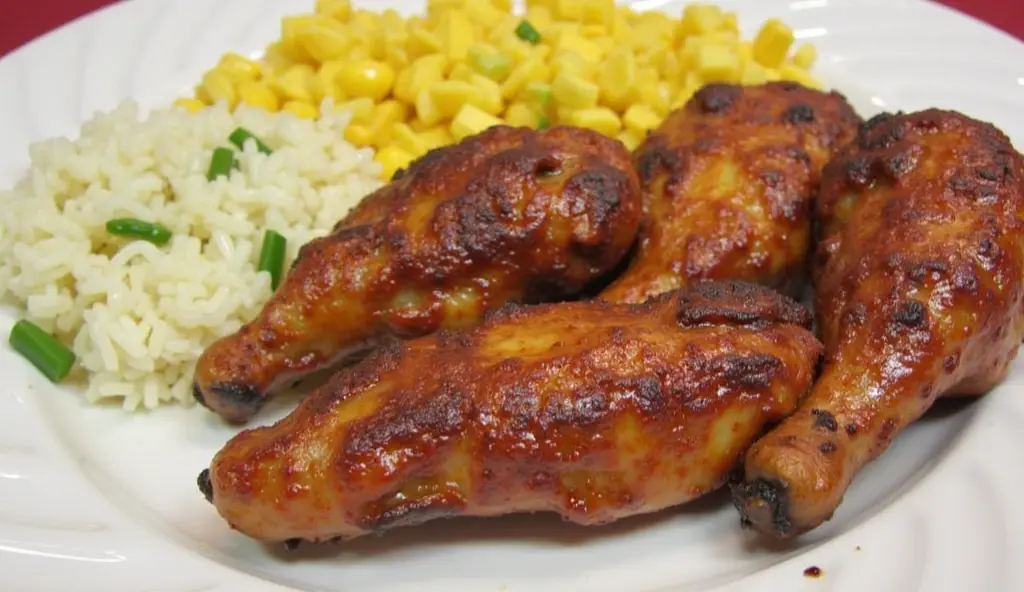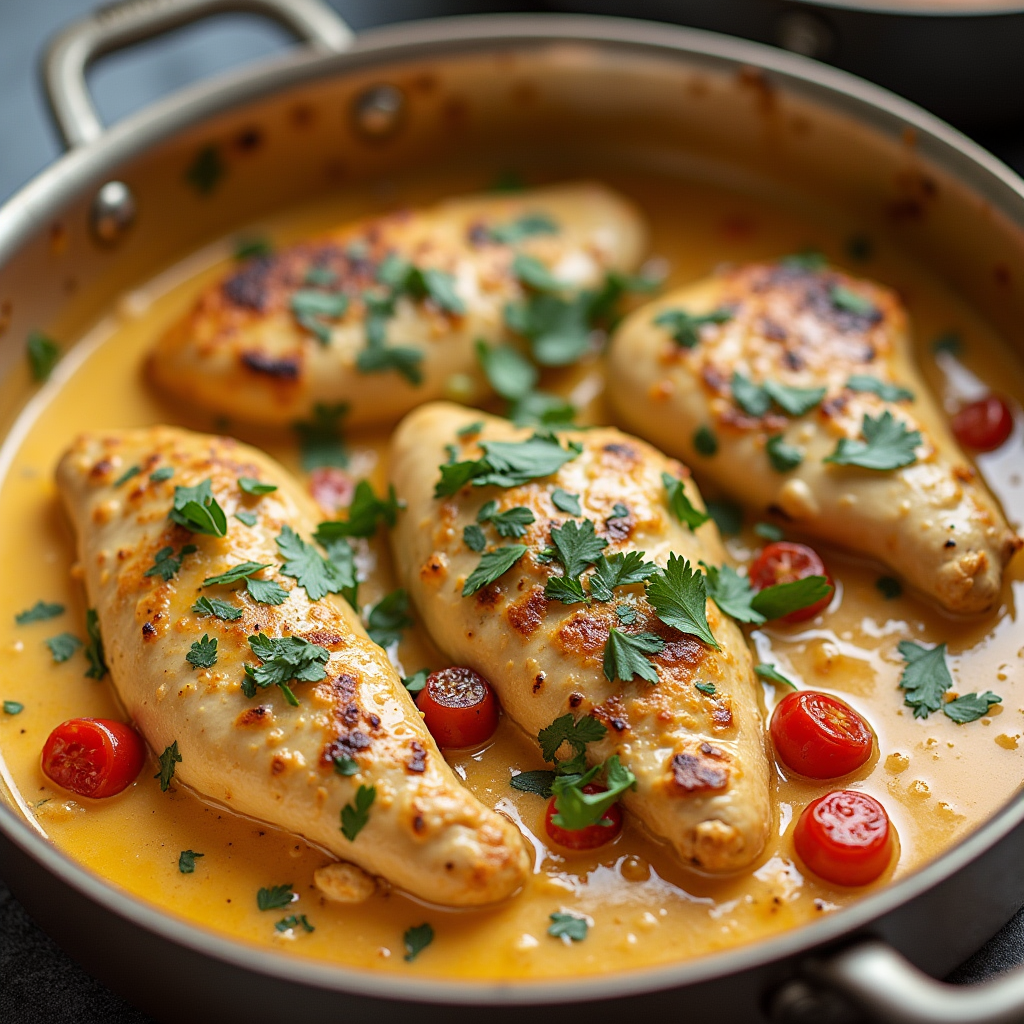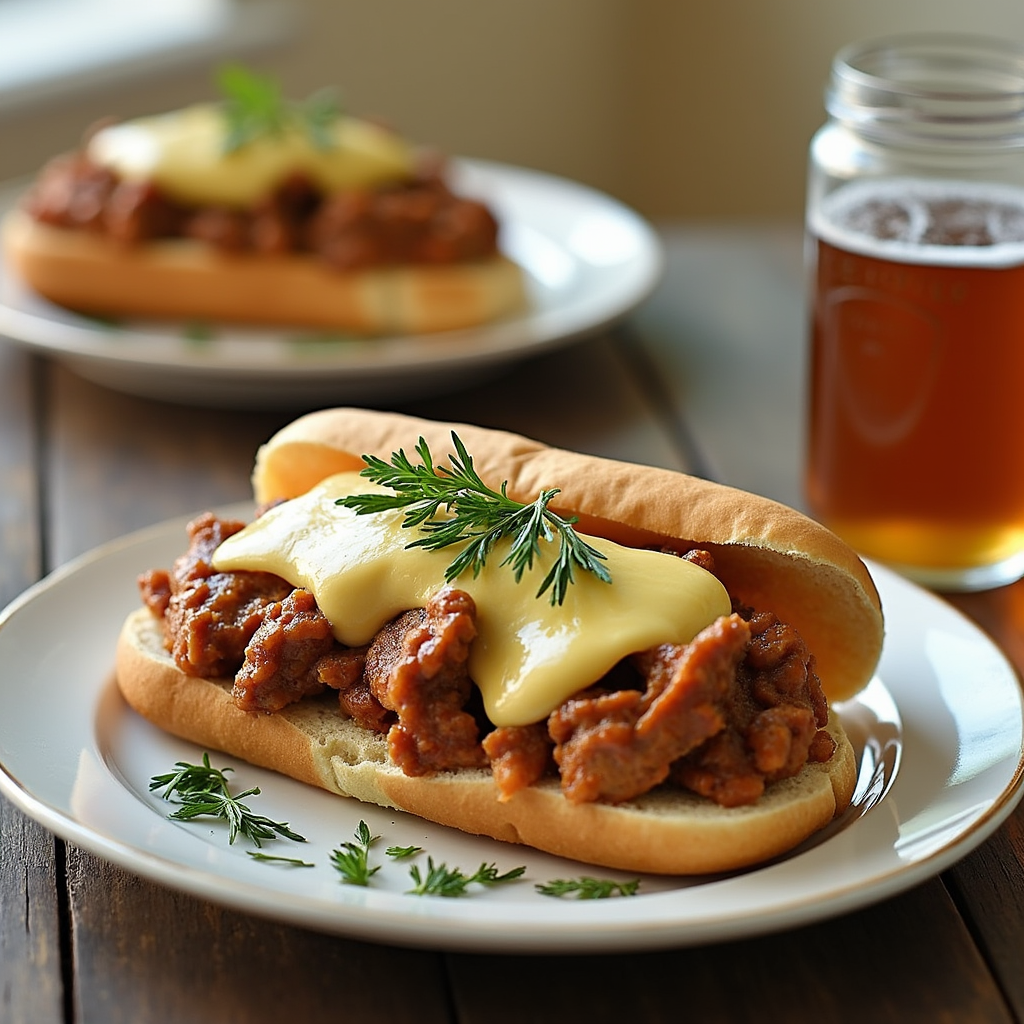
Picture yourself on a Hawaiian beach at sunset, the tantalizing aroma of sweet and savory barbecue chicken filling the air. That’s exactly the experience you can bring to your backyard with this Hawaiian barbecue chicken recipe. The first taste of authentic Hawaiian barbecue often becomes a cherished memory, one that inspires countless attempts to recreate those island flavors at home. This dish combines the perfect balance of sweet pineapple, savory soy sauce, and a hint of ginger that will transport your taste buds straight to the islands—no plane ticket required.
The Secret History of Hawaiian Barbecue
Hawaiian barbecue, as we know it today, represents one of the most delightful culinary fusions in American cuisine. Its origins tell a fascinating story of cultural exchange and adaptation that spans generations.
The roots of Hawaiian barbecue stretch back to the 19th century when immigrant workers from various countries—primarily Japan, Korea, China, Portugal, and the Philippines—arrived to work on Hawaii’s sugarcane and pineapple plantations. These laborers brought their culinary traditions with them, creating a melting pot of flavors that would eventually transform local cooking practices.
Traditional Hawaiian cooking already featured techniques like the underground imu oven, where meats were slow-cooked to perfection. When combined with Asian marinades, Portuguese cooking methods, and American influences, a unique style emerged that couldn’t be found anywhere else in the world.
The iconic “plate lunch”—a hearty meal featuring a protein (often barbecued), two scoops of rice, and macaroni salad—became the cornerstone of Hawaiian casual dining. This humble meal represents the multicultural workforce that built modern Hawaii, with each component reflecting different cultural inputs.
Regional variations exist across the islands, with Hilo-style barbecue featuring more Japanese influence and Honolulu versions incorporating more Korean flavors. On Maui, you’ll find preparations that lean heavier on the pineapple and tropical fruit elements, while the Big Island often features smokier flavors influenced by traditional imu cooking techniques.
Understanding these cultural foundations helps explain why Hawaiian barbecue chicken delivers such a uniquely satisfying flavor profile—it’s the culmination of centuries of culinary evolution and cultural exchange.
Essential Ingredients for Authentic Hawaiian Barbecue Chicken
Creating truly authentic Hawaiian barbecue chicken begins with assembling the right ingredients. The magic of this dish comes from the perfect balance of sweet, savory, tangy, and umami flavors working in harmony.
| Ingredient | Amount | Notes |
|---|---|---|
| Chicken thighs | 2 pounds | Bone-in or boneless work well |
| Pineapple juice | 1 cup | Fresh is best, but canned works too |
| Soy sauce | 1/2 cup | Low sodium recommended |
| Brown sugar | 1/3 cup | Adds caramelization and sweetness |
| Ginger | 2 tablespoons | Freshly grated for best flavor |
| Garlic | 4 cloves | Minced |
| Green onions | 1/4 cup | Sliced, plus extra for garnish |
| Sesame oil | 1 tablespoon | For authentic flavor |
| Rice vinegar | 2 tablespoons | Balances the sweetness |
Each ingredient plays a crucial role in creating the distinctive flavor profile. The pineapple juice works as both a flavoring agent and a tenderizer, thanks to its natural enzymes that break down protein fibers. The soy sauce provides the umami foundation, while brown sugar contributes to that characteristic sticky glaze that makes Hawaiian barbecue chicken so irresistible.
Fresh ginger and garlic create aromatic depth, while the hint of sesame oil adds complexity that elevates the marinade beyond simpler barbecue styles. The rice vinegar provides just enough acidity to balance out the sweetness, ensuring that no single flavor dominates the profile.
Ingredient Substitutions and Variations
Finding yourself short on traditional ingredients shouldn’t prevent you from enjoying this island-inspired dish. Here are some practical substitutions that maintain the authentic taste:
If pineapple juice isn’t available, orange juice mixed with a small amount of white vinegar can provide similar sweetness and acidity. For those avoiding soy sauce, coconut aminos offer a comparable flavor profile while remaining gluten-free. Maple syrup or honey can replace brown sugar, though they’ll introduce slightly different flavor notes.
Making this recipe gluten-free requires just one simple swap—replace traditional soy sauce with tamari or coconut aminos. For those who enjoy spicier dishes, adding crushed red pepper flakes or a tablespoon of sriracha to the marinade creates a pleasant heat that complements the sweet elements.
Budget-conscious cooks can still achieve fantastic results by using less expensive chicken cuts like leg quarters (separated into thighs and drumsticks) or even chicken wings, which work beautifully with this marinade. The key lies in maintaining the marinade proportions rather than the exact ingredients.
Step-by-Step Marinade Preparation
Creating the perfect Hawaiian barbecue chicken begins with a properly prepared marinade. This crucial step infuses the chicken with those distinctive island flavors and ensures meat that remains juicy and tender after cooking.
- Select a glass or non-reactive mixing bowl large enough to hold all liquid ingredients with space for whisking.
- Pour the pineapple juice into the bowl first, then add soy sauce and rice vinegar.
- Add the brown sugar to the liquid mixture and whisk vigorously until completely dissolved—this prevents grainy texture in the finished dish.
- Incorporate freshly minced garlic and grated ginger, stirring to distribute evenly throughout the liquid.
- Drizzle in the sesame oil while continuing to whisk, which helps it emulsify with the other ingredients.
- Fold in the sliced green onions and optional sesame seeds for added texture and visual appeal.
- Before adding chicken, reserve approximately 1/4 cup of the marinade in a separate container for basting during cooking.
This marinade achieves the perfect balance between sweet and savory elements that characterizes authentic Hawaiian barbecue. The reserved portion allows you to add flavor during cooking without cross-contamination concerns from the raw chicken.
Marinating Tips for Maximum Flavor
Achieving restaurant-quality Hawaiian barbecue chicken depends heavily on proper marinating technique. While the ingredients matter, how you marinate proves equally important to the final result.
For maximum flavor penetration, place chicken and marinade in a zip-top plastic bag or sealed container, ensuring all pieces receive equal exposure to the marinade. Gently massage the bag to coat all surfaces before refrigerating. While four hours provides decent flavor, overnight marination allows the pineapple enzymes to tenderize the meat while the flavors fully incorporate.
Food safety remains paramount when marinating raw chicken. Always keep marinating meat refrigerated, never at room temperature. If using a zip-top bag, place it inside a bowl to prevent any leakage contaminating your refrigerator.
You’ll recognize properly marinated chicken by its slightly darker appearance and the way the marinade clings to the surface. The chicken should smell fragrant with notes of pineapple, soy, and ginger coming through clearly.
Cooking Methods for Hawaiian Barbecue Chicken
Hawaiian barbecue chicken offers remarkable versatility in cooking methods, making it accessible regardless of your available equipment. Each technique produces slightly different results while maintaining the dish’s essential character.
Grilling Method (Traditional)
Grilling represents the most authentic preparation method for Hawaiian barbecue chicken, creating characteristic char marks and caramelization that enhance the flavor profile.
- Preheat your grill to medium-high heat (around 375-400°F) and thoroughly clean the grates.
- Oil the grates using tongs holding a paper towel dipped in neutral oil to prevent sticking.
- Remove chicken from marinade, allowing excess to drip off but not wiping dry.
- Place chicken on the grill, starting with skin side down if using skin-on pieces.
- Grill for approximately 6-7 minutes per side, adjusting for chicken thickness.
- During the final minutes of cooking, brush with reserved marinade to create a sticky, flavorful glaze.
- Cook until internal temperature reaches 165°F at the thickest part, verified with a meat thermometer.
- Let chicken rest for 5 minutes before serving to allow juices to redistribute.
This method produces Hawaiian barbecue chicken with slightly crispy edges and a caramelized exterior that highlights the marinade’s sweet elements while maintaining juicy meat inside.
Oven-Baked Method
When outdoor grilling isn’t feasible, oven baking delivers excellent results with minimal supervision required.
- Preheat your oven to 375°F and line a baking sheet with foil for easier cleanup.
- Arrange marinated chicken pieces on the baking sheet, ensuring they don’t touch for even cooking.
- Bake for 35-40 minutes, depending on chicken thickness and whether bone-in pieces are used.
- Halfway through cooking, brush with reserved marinade to maintain moisture and build flavor.
- For additional caramelization, broil for the final 2-3 minutes while watching carefully to prevent burning.
- Verify doneness with a meat thermometer showing 165°F at the thickest portion.
Oven baking produces exceptionally tender chicken with consistent results, making it ideal for entertaining or when cooking multiple batches.
Instant Pot/Slow Cooker Method
For convenience-focused preparation, pressure cooking or slow cooking offers “set-and-forget” simplicity with outstanding flavor development.
- Place marinated chicken in your electric pressure cooker or slow cooker.
- For Instant Pot: Cook on high pressure for 10 minutes (boneless) or 12 minutes (bone-in), followed by 5 minutes natural release.
- For slow cooker: Cook on low for 6-7 hours or high for 3-4 hours until chicken reaches proper temperature.
- For the finishing touch that replicates grilled texture, transfer chicken to a foil-lined baking sheet.
- Brush with reserved marinade mixed with a tablespoon of honey for enhanced caramelization.
- Broil for 3-4 minutes until edges darken and sauce bubbles.
This method creates fall-off-the-bone tender chicken with deeply infused flavor, although it lacks the char of grilled versions. The broiling step helps mimic some of the traditional finish.
Serving Suggestions: The Complete Hawaiian Plate
Authentic Hawaiian barbecue chicken isn’t complete without appropriate accompaniments that complement and enhance the main dish. Creating a traditional Hawaiian plate brings the full island experience to your dining table.
White rice serves as the foundation of any proper Hawaiian plate. Prepare medium-grain rice using slightly less water than usual for the perfect sticky-yet-distinct texture that pairs perfectly with the sauce-laden chicken. Traditionally, rice should take up approximately one-third of the plate.
Macaroni salad represents another essential component. The authentic version features elbow macaroni tossed with mayonnaise, grated carrot, and a touch of grated onion—deliberately simple and creamy to contrast with the chicken’s bold flavors. Keep seasonings minimal beyond salt and pepper to allow the barbecue chicken to shine.
For veggie options that maintain Hawaiian authenticity, consider quick-pickled cucumbers, shredded cabbage slaw with rice vinegar dressing, or grilled pineapple slices. These additions provide freshness and textural contrast against the rich chicken.
Garnishing brings the plate together visually and adds fresh flavor accents. Sprinkle thinly sliced green onions over everything, add a small heap of toasted sesame seeds, or include a wedge of fresh pineapple for an interactive element that diners can squeeze over their chicken for added brightness.
Make-Ahead and Storage Guidelines
The convenience of Hawaiian barbecue chicken extends to its make-ahead potential, allowing you to prepare components in advance for streamlined meal preparation.
Prepare the marinade up to three days ahead and store in an airtight container in the refrigerator. This advance preparation actually intensifies flavor development as the garlic and ginger oils infuse more thoroughly into the liquid base.
Chicken can marinate for up to 24 hours—beyond this, the pineapple enzymes may begin breaking down proteins too much, potentially affecting texture. For longer preparation timelines, freeze the chicken in the marinade, which stops the enzymatic action while allowing flavors to penetrate slowly as it thaws.
After cooking, refrigerate leftover Hawaiian barbecue chicken in shallow containers for quick cooling, ensuring food safety. Properly stored, it maintains optimal quality for up to four days in the refrigerator. When reheating, add a tablespoon of water before covering to create steam that prevents drying.
For freezing cooked chicken, separate pieces with parchment paper before placing in freezer bags to prevent them from freezing together. Include some sauce in each portion to maintain moisture during reheating. Frozen cooked chicken remains high-quality for approximately two months.
The most effective reheating method involves bringing refrigerated chicken to room temperature for 20 minutes, then warming in a 300°F oven covered with foil until heated through (about 15 minutes). This gentle approach prevents toughening while reactivating the glaze.
Frequently Asked Questions About Hawaiian Barbecue Chicken
What makes Hawaiian barbecue chicken different from other barbecue styles?
Hawaiian barbecue chicken distinguishes itself through its unique fusion of Asian and Polynesian flavors. Unlike mainland American barbecue styles that often rely heavily on smoke, vinegar, or tomato-based sauces, Hawaiian barbecue chicken features a marinade with pronounced sweet-savory balance from pineapple juice, soy sauce, and ginger. The cooking style typically focuses on grilling rather than slow smoking, creating caramelization that enhances the fruity elements in the marinade.
Can I use chicken breasts instead of thighs for this Hawaiian barbecue chicken recipe?
Yes, chicken breasts work perfectly with this Hawaiian barbecue chicken recipe, though they require slight technique adjustments. Since breasts contain less fat than thighs, reduce the cooking time by approximately 2-3 minutes per side when grilling to prevent drying. Consider pounding thicker portions to even thickness for consistent cooking. Additionally, brining chicken breasts for 30 minutes in a solution of 1 tablespoon salt per cup of water before marinating helps maintain moisture during cooking.
How long should I marinate my Hawaiian barbecue chicken for the best flavor?
For optimal flavor development in your Hawaiian barbecue chicken, marinate boneless pieces for 4-8 hours and bone-in pieces for 8-24 hours. The pineapple juice contains enzymes that begin tenderizing the meat almost immediately. While one hour provides noticeable flavor, the full character develops over longer periods as the marinade penetrates deeper into the meat. Avoid marinating beyond 24 hours, as extended exposure to pineapple enzymes can sometimes create a mushy texture.
Is Hawaiian barbecue chicken spicy?
Traditional Hawaiian barbecue chicken typically delivers more sweet-savory flavor than heat. The standard preparation contains minimal spiciness, focusing instead on the balance between sweet pineapple, savory soy sauce, and aromatic ginger. However, contemporary versions sometimes incorporate chili flakes, sriracha, or other heat sources to create a pleasant kick. This recipe can easily be customized with 1-2 teaspoons of your preferred hot sauce or 1/2 teaspoon of crushed red pepper flakes in the marinade to create your desired spice level.
What’s the best way to achieve that sticky glaze on Hawaiian barbecue chicken?
Creating the signature sticky glaze on Hawaiian barbecue chicken requires attention to sugar content and proper basting technique. Reserve approximately 1/4 cup of marinade before adding raw chicken, then mix this reserved portion with an additional tablespoon of brown sugar or honey. Apply this mixture during the final 3-5 minutes of cooking, allowing the sugars to caramelize without burning. For enhanced glazing, apply multiple thin layers rather than one thick coat, allowing each application to set for about a minute before adding more.
Can I make Hawaiian barbecue chicken without a grill?
Absolutely! While grilling provides traditional char marks and smoky notes, Hawaiian barbecue chicken adapts beautifully to indoor cooking methods. An oven-baked version at 375°F for 35-40 minutes delivers excellent results, especially when finished under the broiler for 2-3 minutes to create caramelization. Alternatively, a cast-iron skillet on the stovetop provides good color and crust—sear chicken on medium-high heat for 3-4 minutes per side, then reduce heat to medium-low and cook until done, basting regularly with the reserved marinade.
What are the traditional side dishes served with Hawaiian barbecue chicken?
Authentic Hawaiian plate lunches featuring barbecue chicken traditionally include steamed white rice and macaroni salad as the standard sides. The macaroni salad differs from mainland versions, featuring a simpler preparation with elbow pasta, mayonnaise, grated carrot, and minimal seasonings. Other common accompaniments include lomi-lomi salmon (diced salmon with tomatoes and onions), poi (taro root paste), grilled pineapple slices, quick-pickled vegetables, or sliced avocado. For a complete experience, serve with a side of aloha (sweet bread rolls).
How can I adjust this Hawaiian barbecue chicken recipe for a large gathering?
Scaling Hawaiian barbecue chicken for larger groups works beautifully with some strategic planning. The marinade recipe multiplies directly—simply maintain the same proportions while increasing quantities. For serving 15-20 people, prepare approximately 7-8 pounds of chicken. Marinate in multiple smaller batches rather than one large container to ensure even flavor distribution. Consider using disposable aluminum pans for both marinating and serving. For cooking efficiency, grill in batches, keeping early batches warm in a 200°F oven covered loosely with foil until all chicken is ready. Alternatively, transition to oven-baking in multiple large sheet pans for consistent results with minimal supervision.


